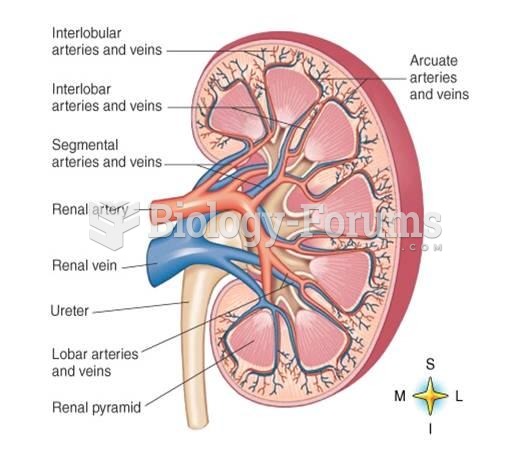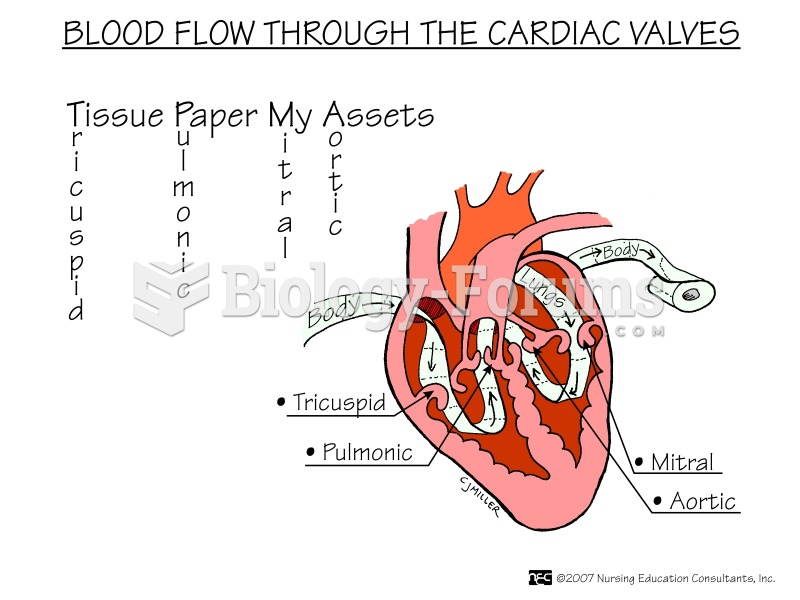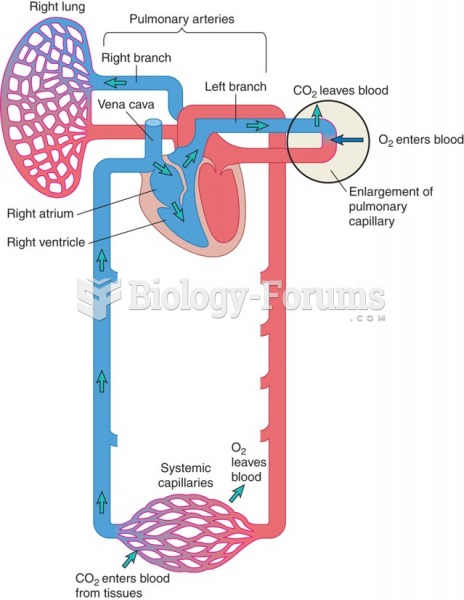|
|
|
Asthma-like symptoms were first recorded about 3,500 years ago in Egypt. The first manuscript specifically written about asthma was in the year 1190, describing a condition characterized by sudden breathlessness. The treatments listed in this manuscript include chicken soup, herbs, and sexual abstinence.
When blood is exposed to air, it clots. Heparin allows the blood to come in direct contact with air without clotting.
Patients who have been on total parenteral nutrition for more than a few days may need to have foods gradually reintroduced to give the digestive tract time to start working again.
The familiar sounds of your heart are made by the heart's valves as they open and close.
There are 20 feet of blood vessels in each square inch of human skin.







